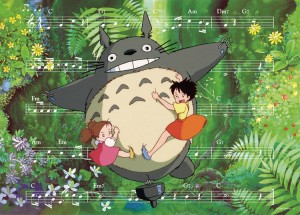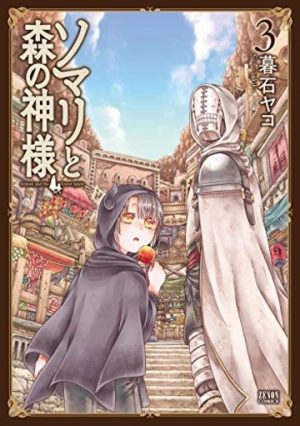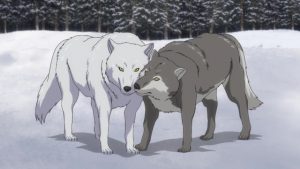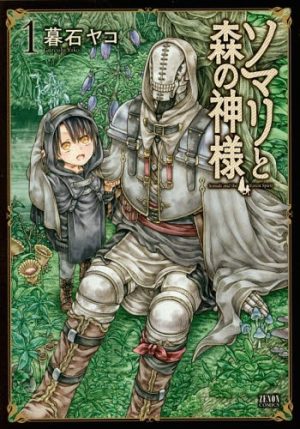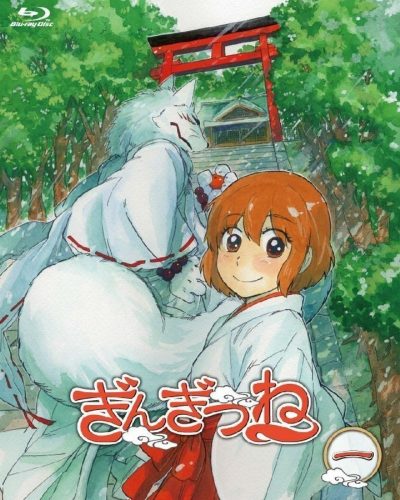
Thanks to its mountainous terrain and longstanding traditional cultural practices revolving around living in harmony with nature, much of Japan was, and continues to be, heavily forested with over two-thirds of the country currently covered by trees. This has impacted and is reflected in various aspects of Japanese life that continue to this day, including pop culture like manga, games, and anime. This Anime Culture Monday, let’s journey through the woods together!
Shinto & Satoyama
Without going into too much detail, one of the core beliefs of Shinto, Japan’s traditional polytheistic religion, is that many spirits or gods, called kami, take the forms of and influence many things in everyday life. While there are kami for almost everything, even modern things like cell phones nowadays, the link between kami and nature has long been the most pronounced. Trees and forests, in particular, are important to Shinto with the first “shrines” simply being sacred groves where the kami lived, in fact the word for shrine itself can sometimes be read as ‘mori’ (forest). Trees are also often yorishiro, or things that attract kami, and marked as such using ropes with paper decorations when they house a kami inside. These can be seen at thousands of Shinto shrines across Japan which themselves are also typically surrounded by trees.
Another important concept to understanding the Japanese perception of forests can be found in the satoyama. This word describes the border area between a village and a mountain or, more generally, the wilderness. It ties into traditional methods of agriculture and can basically be thought of as small wooded areas created and managed by the community on the outskirts of towns and in between their rice paddies and fields. In the satoyama, wood is harvested for building materials, firewood, and charcoal, fallen leaves for fertilizer, wild mushrooms for eating, and so on. While satoyama is manmade, it is done in a way that is mutually beneficial and sustainable for both people and nature and reflects the Japanese cultural closeness to and reverence for forests.
Forests in Anime & Pop Culture
As you might expect, forests are also part of contemporary Japanese culture and have been heavily featured in a wide variety of modern mediums, including anime. Some of the most notable examples of this can be found in the works of famous Studio Ghibli director Hayao Miyazaki. In Mononoke Hime (Princess Mononoke), for example, the forest is not only the most prominent setting (along with the contrasting Irontown) but a living symbol personified by the enigmatic Forest Spirit deity and child-like Kodama and treated with a degree of Shinto-like reverence. Princess Mononoke’s forest was actually based on the real island of Yakushima, which is south of Kyushu. A more cheerful depiction can be found in Tonari no Totoro (My Neighbor Totoro) which illustrates the idealized satoyama of Saitama in beautiful detail. Nausicaä’s Toxic Jungle is another example, albeit this time in a very science-fiction form.
Some other anime that prominently feature forests include Giniro no Kami no Agito (Origin: Spirits of the Past) which, similarly to Princess Mononoke and Nausicaä, largely focuses on man’s relationship and conflict with nature, the supernatural romance Hotarubi no Mori e (Into the Forest of Fireflies' Light) which is about a girl’s mysterious encounter with a forest spirit in a sacred grove, and Mamoru Hosoda’s Ookami Kodomo no Ame to Yuki (Wolf Children), where it serves as a symbol for the children’s wolf side in contrast to the city and is included in many scenes throughout the film. The shot of the children running through a snow-covered forest, in particular, is one of the most memorable in Wolf Children.
The expansive Aokigahara forest surrounding Mt. Fuji, also known as the Sea of Trees, is also worth mentioning as a place long believed to be the home of yurei, or ghosts, in Japanese mythology and in modern times now infamous as a suicide site.
Final Thoughts

Needless to say, forests have had a big impact on Japanese life for centuries and continue to be important in the modern-day, perhaps even more so now as environmental concerns and the decline of Japan’s satoyama in many rural communities threatens the stability of the country. We’ll close by mentioning Do As Infinity's Fukai Mori (Deep Forest) which was used as the second ED for InuYasha as an intersection of pop culture surrounding forests.
We hope you enjoyed this article! Please stick around Honey’s for more Anime Culture Monday and more and let us know what you think in the comments section below. Until next time, see ya~!
Recommended Post
Top 10 Impressive Forest Scenes in Anime
Recommended Post


